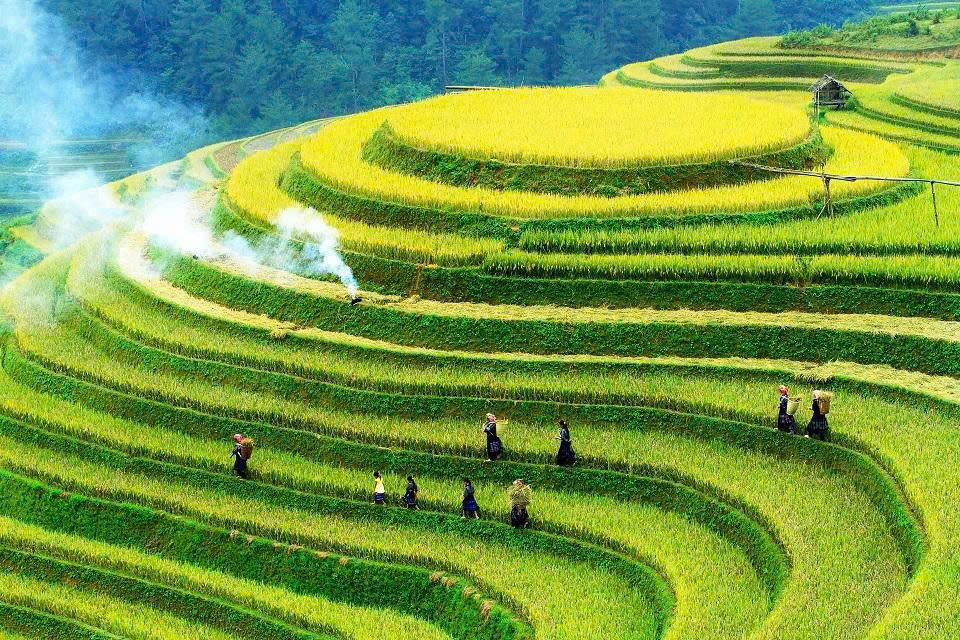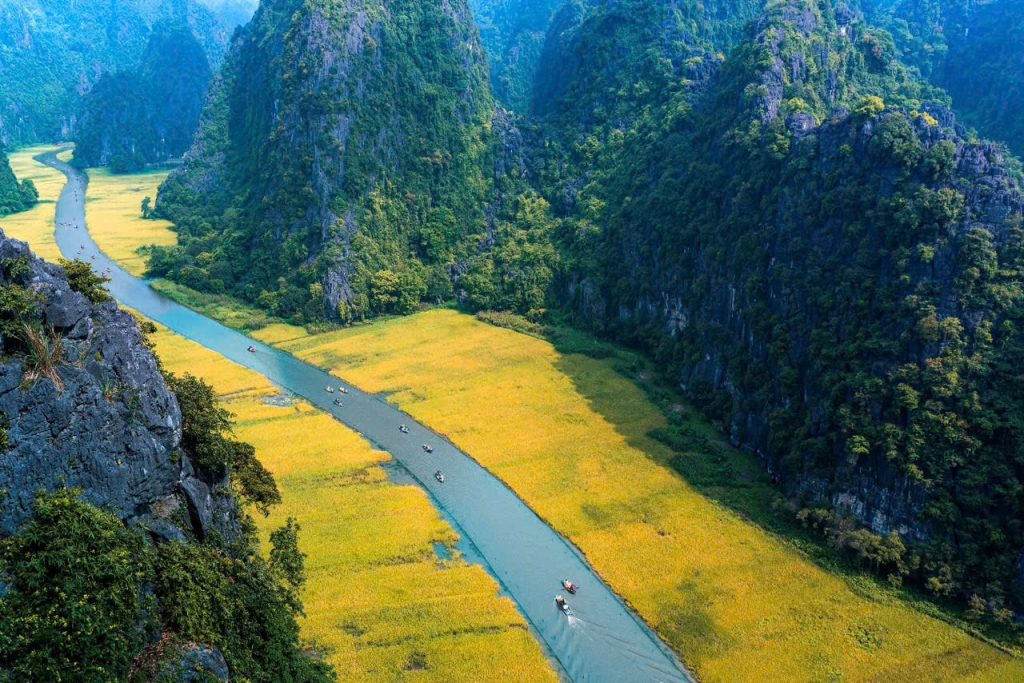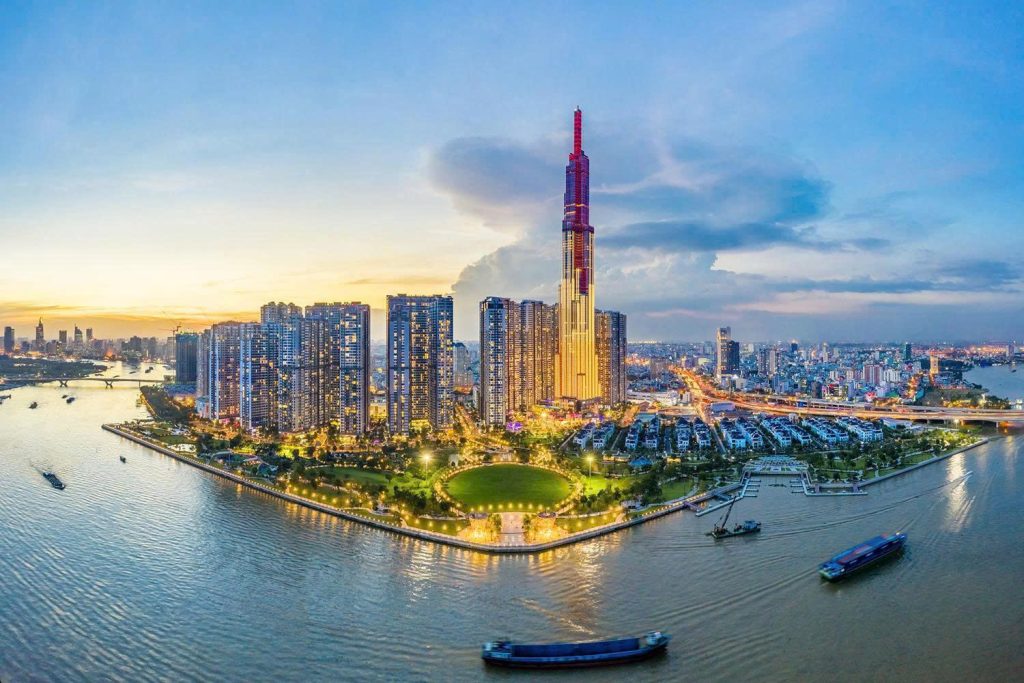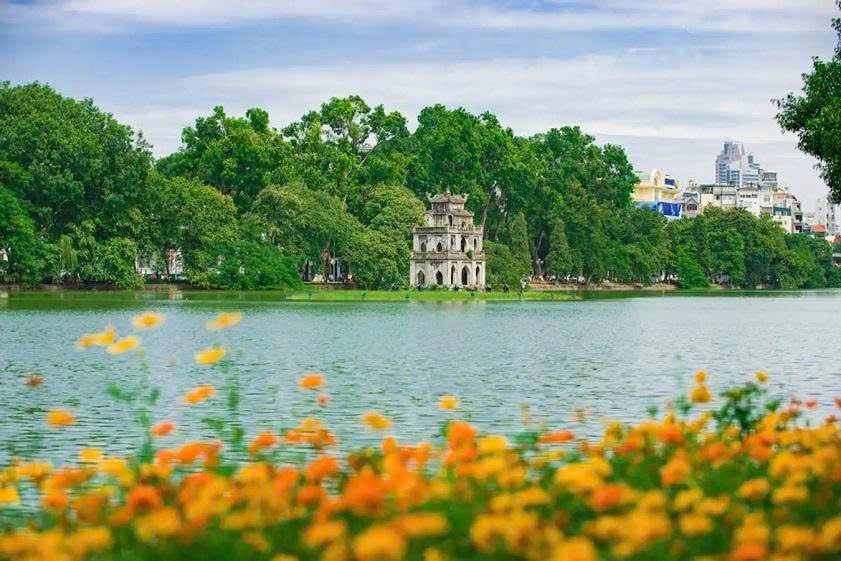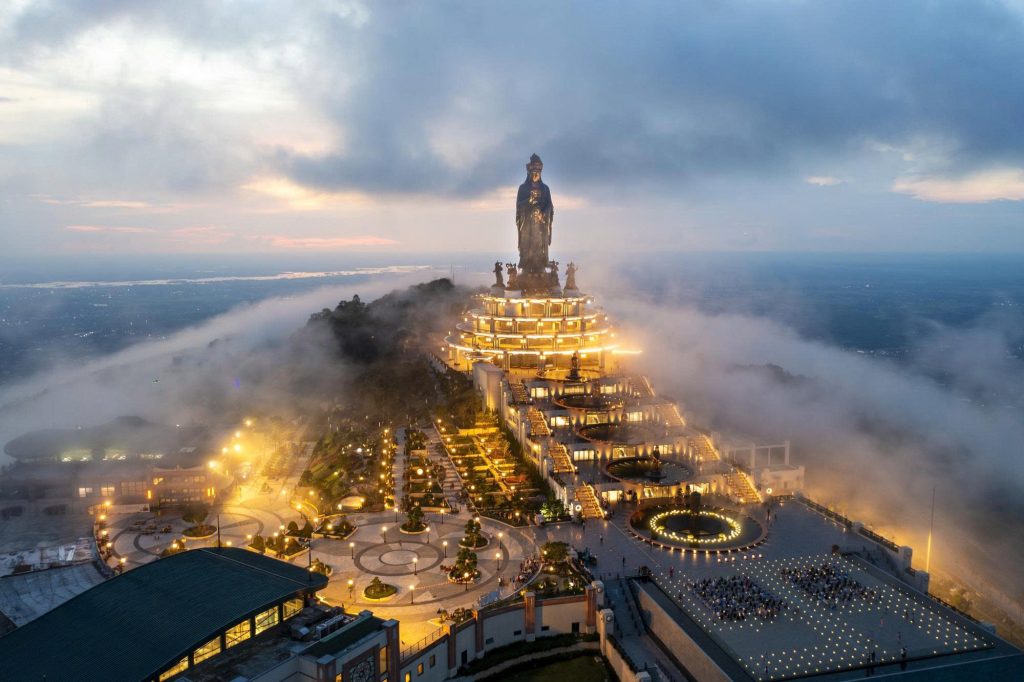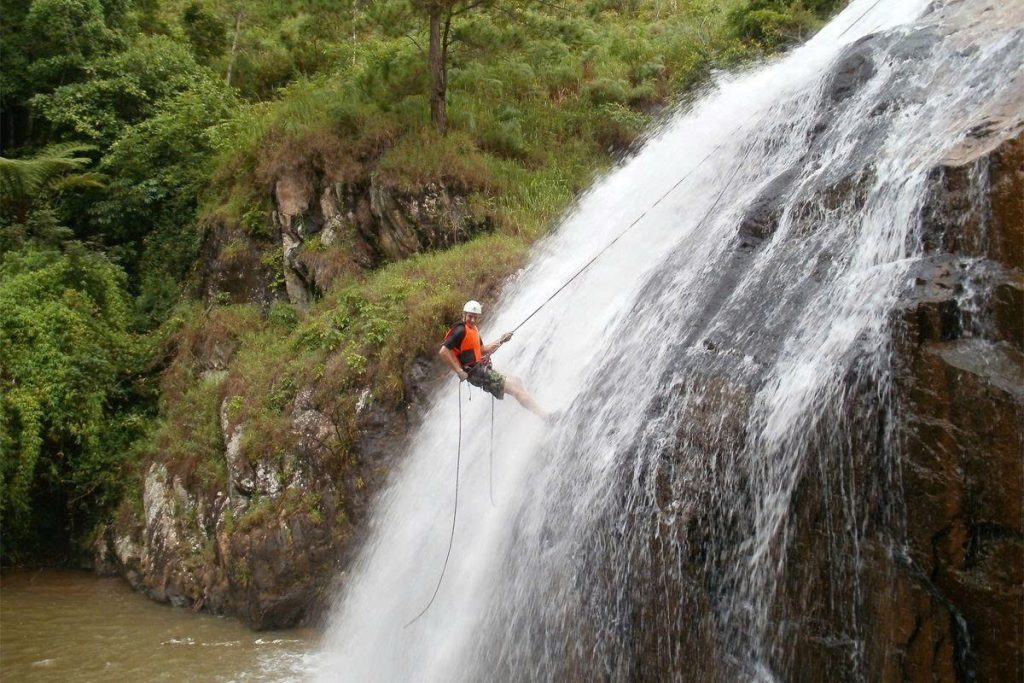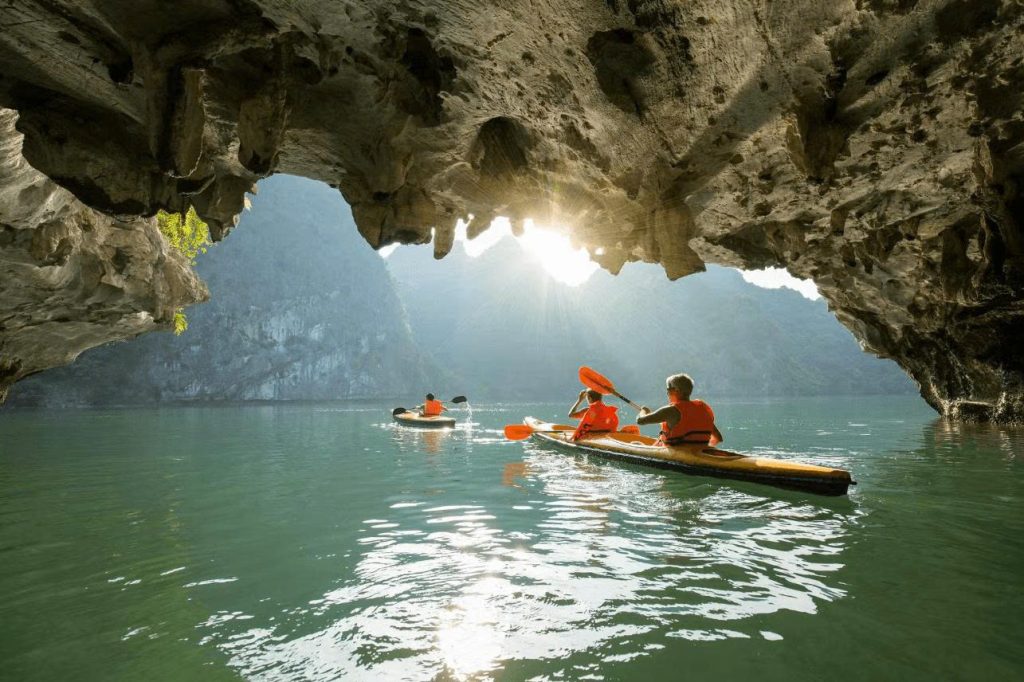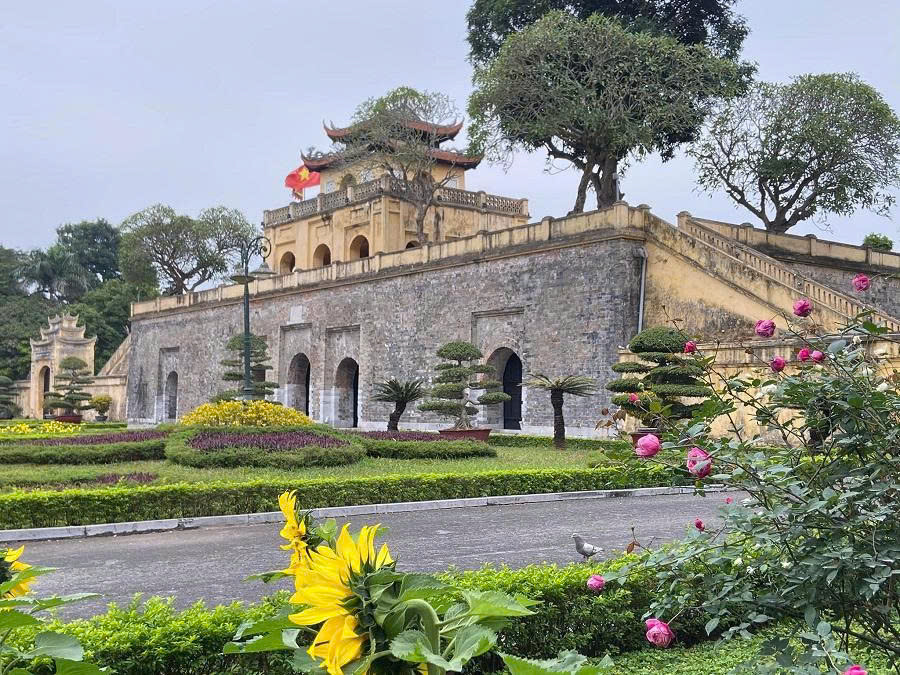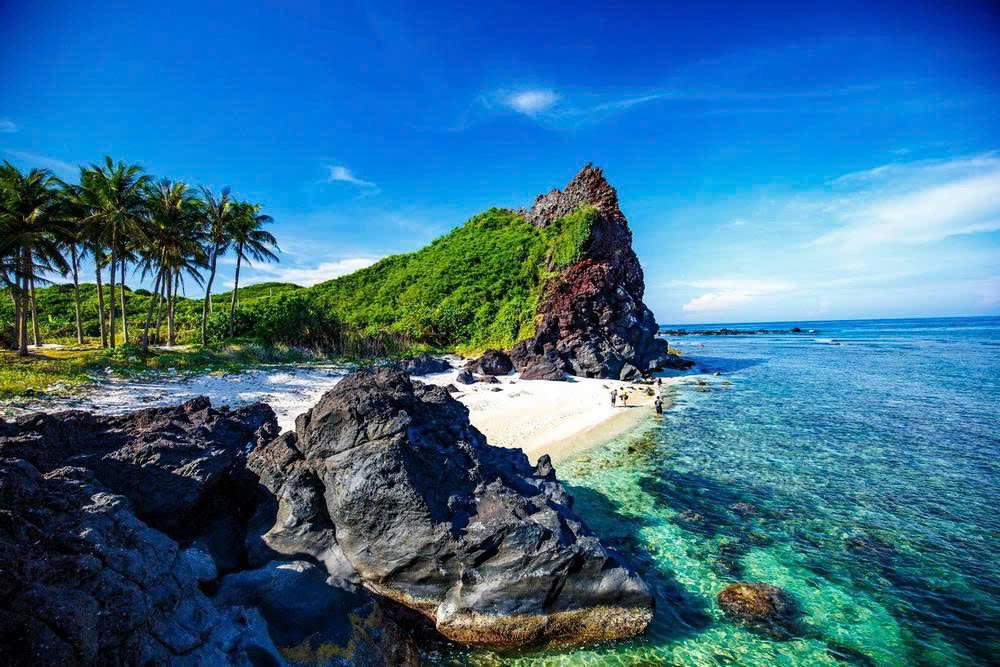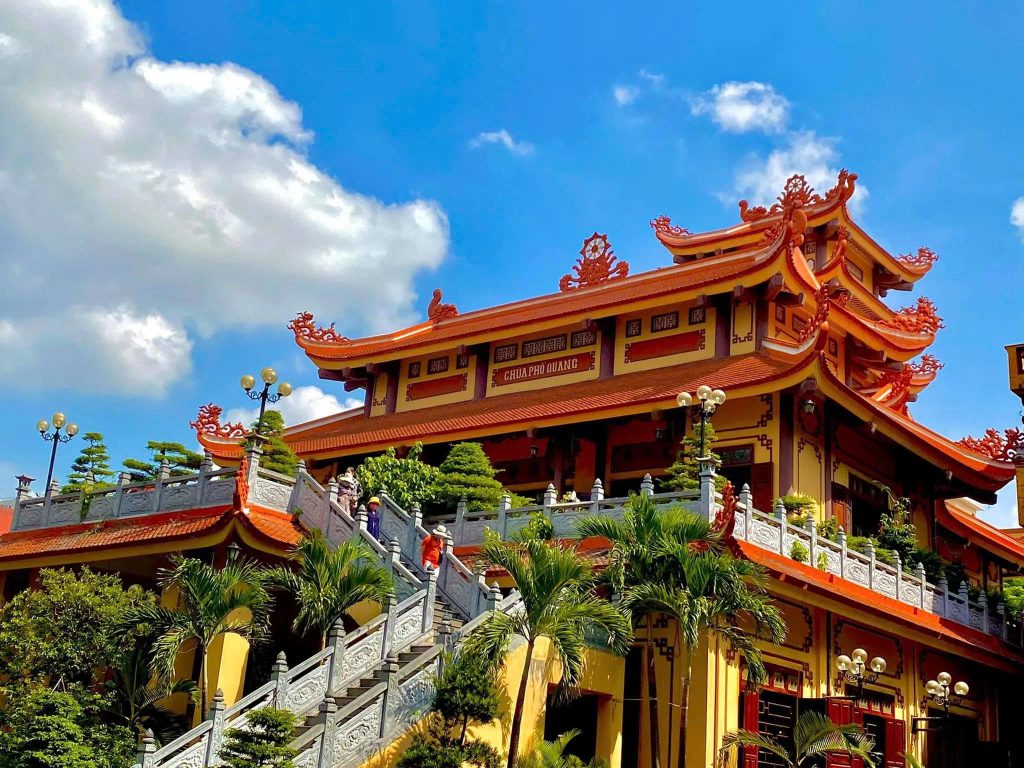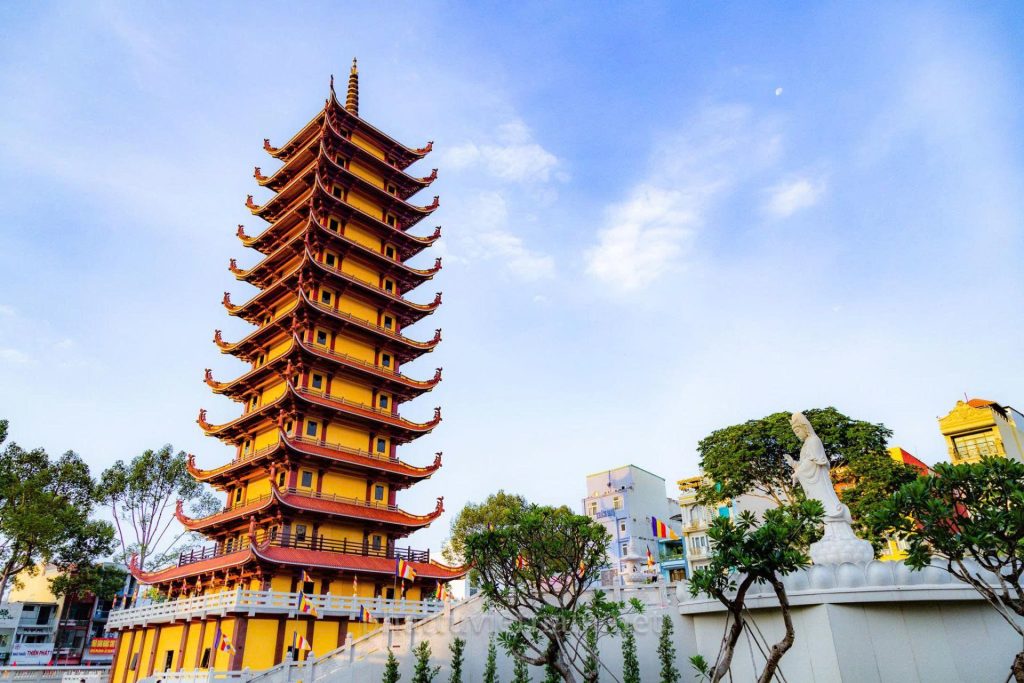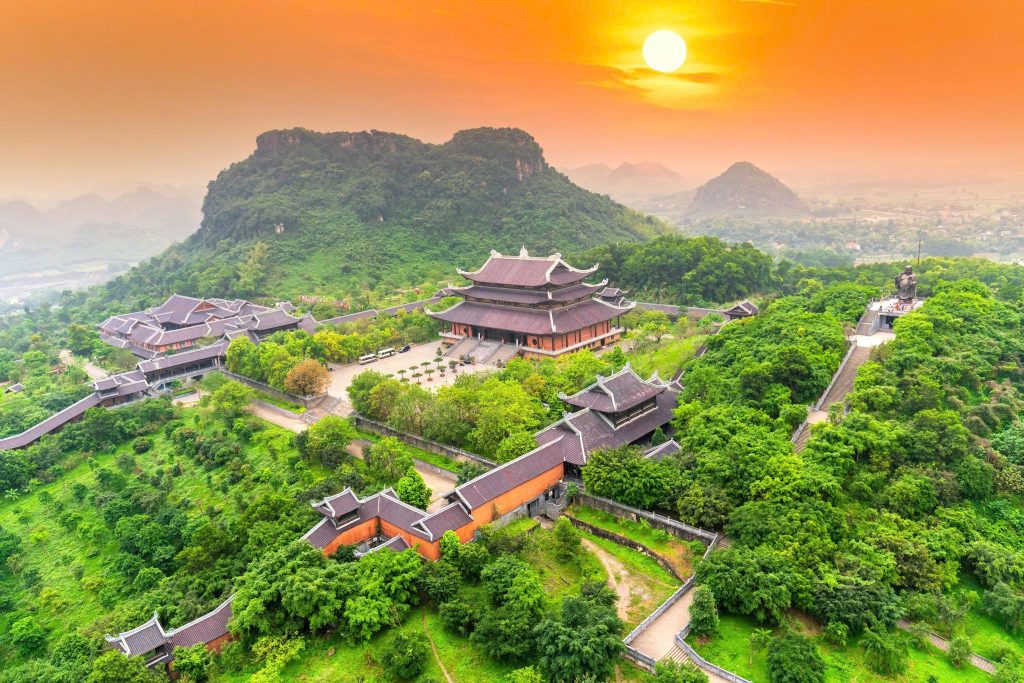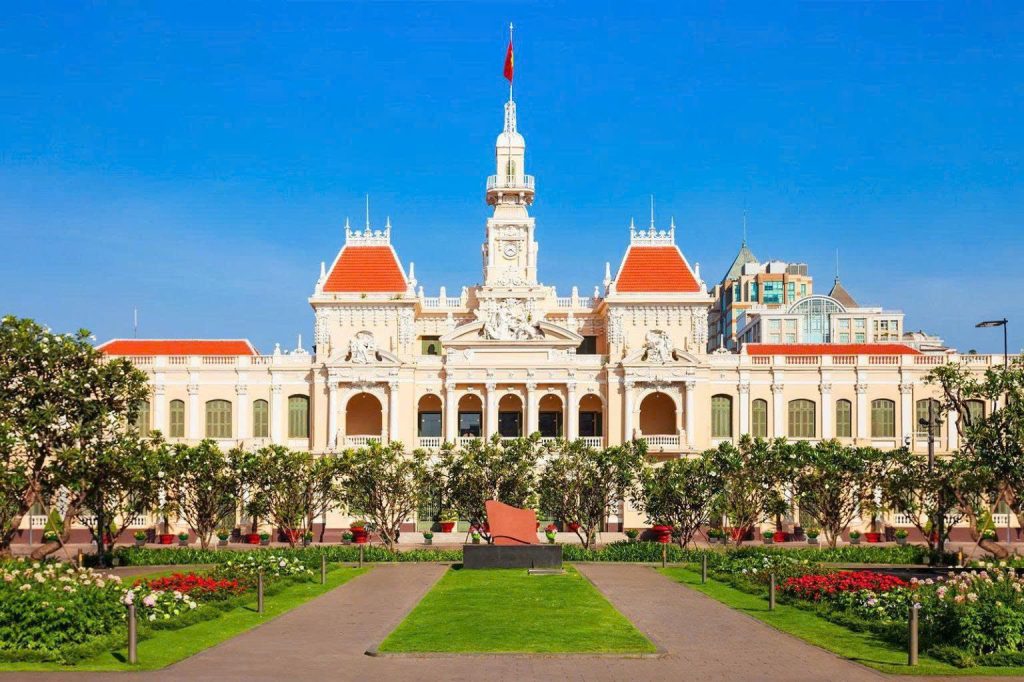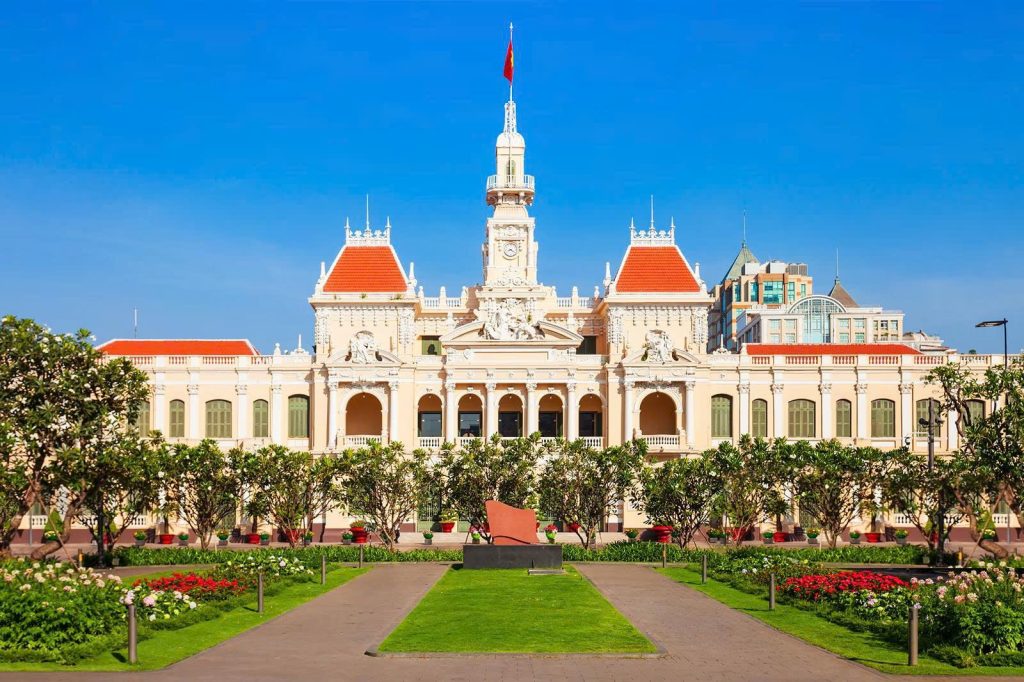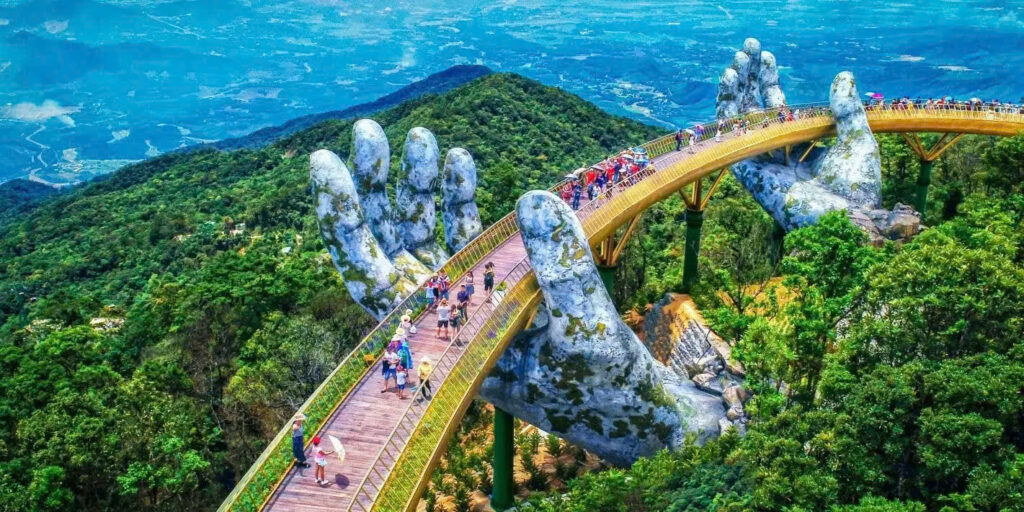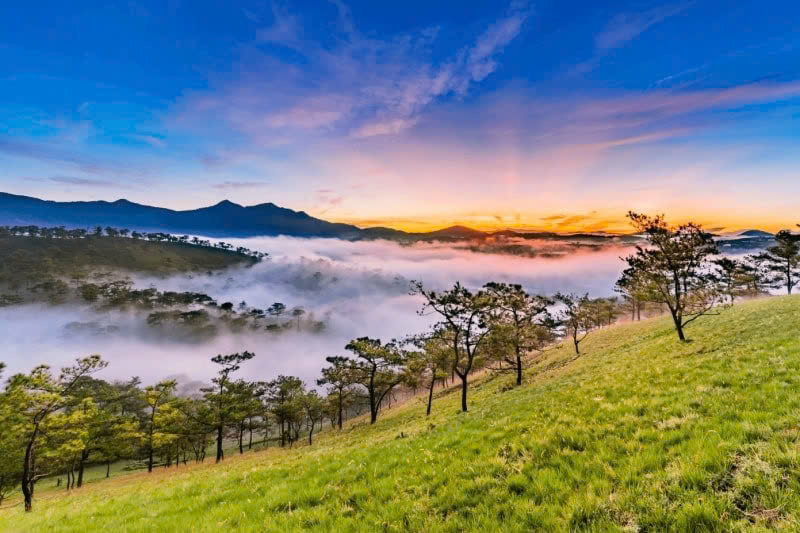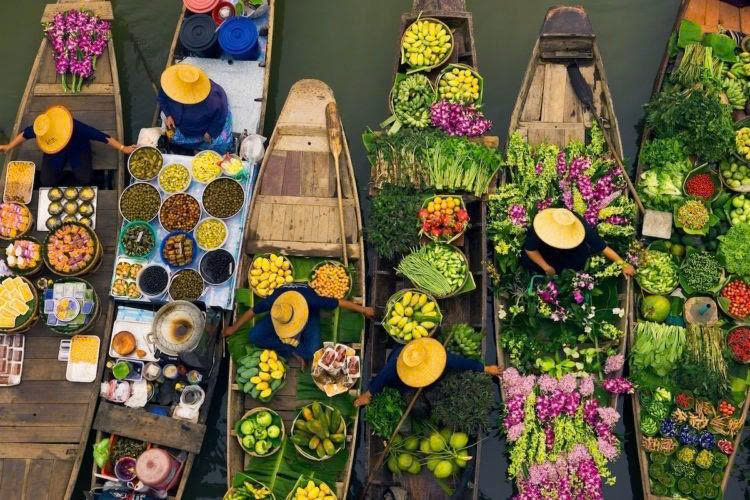The mountains of Northwest Vietnam undergo a breathtaking transformation every autumn, when the vast terraced rice fields—a millennia-old cultural and agricultural masterpiece—turn a brilliant, shimmering gold. This is the “Mùa Vàng” (Golden Season), the time of harvest, and the most spectacular period for travel in the region.
The most critical factor in “săn lúa vàng” (hunting the golden rice) is timing. The harvest doesn’t happen simultaneously across the entire Northwest, as different altitudes and local practices dictate varying schedules.
The Golden Window: When to Catch the Peak Harvest
| Region | Timing | Key Localities |
| Early | Late August – Mid-September | Y Tý (Bát Xát District, Lào Cai), high-altitude fields of Sa Pa (Lào Cai) |
| Peak | Mid-September – Early October | Mù Cang Chải (Yên Bái), Tú Lệ (Yên Bái) |
| Late | Early October – Mid-October | Hoàng Su Phì (Hà Giang) |
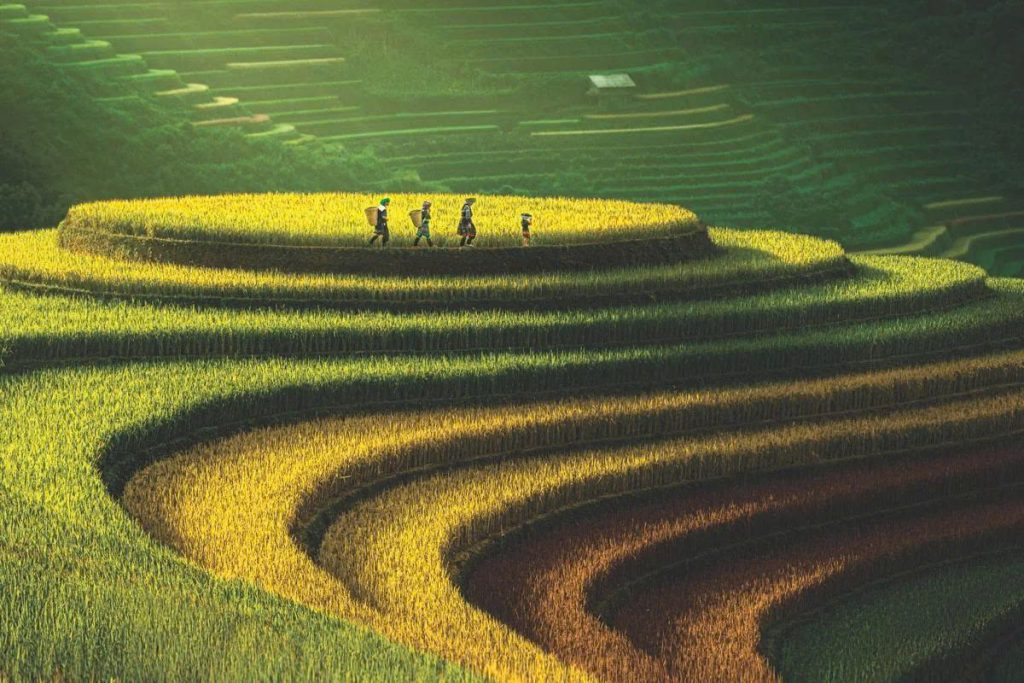
Tip: Always check local tourism boards (like those in Yên Bái or Hà Giang) two weeks before your trip. A sudden heatwave or early rain can shift the harvest dates dramatically. The peak period of late September is often the safest bet for maximum coverage.
The 5 Essential Golden Viewpoints You Cannot Miss
These five locations are the undisputed jewels of the Golden Season, each offering a unique perspective on Vietnam’s magnificent rice terraces.
1. Mù Cang Chải: The Terraced Masterpiece
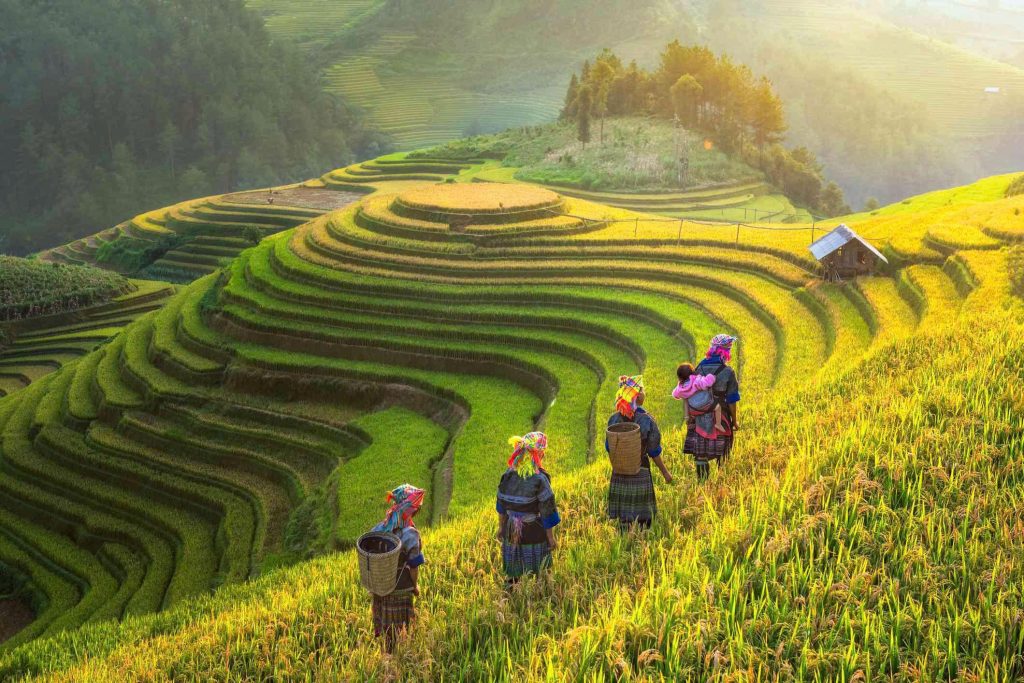
Mù Cang Chải is the most famous destination for the Golden Season, and for good reason. Its terraces are vast, meticulously sculpted, and were officially recognized as a National Scenic Site. The sheer scale of the landscape is overwhelming.
Must-See:
- Horseshoe Hill (Đồi Móng Ngựa): Located in Sáng Nhù Commune, this is the most photographed spot. The fields form a perfect, sloping semi-circle, creating an unforgettable image.
- La Pán Tẩn: Known for its “fingerprint” terraces—the intricate, swirling patterns visible from high above.
- Khau Phạ Pass: One of the four great mountain passes in Vietnam. This is the launchpad for the famous paragliding festival (usually held in late September), offering a bird’s-eye view of the golden Lìm Mông and Lìm Thái valleys below.
2. Hoàng Su Phì: The Untamed Heritage Site (Hà Giang Province)
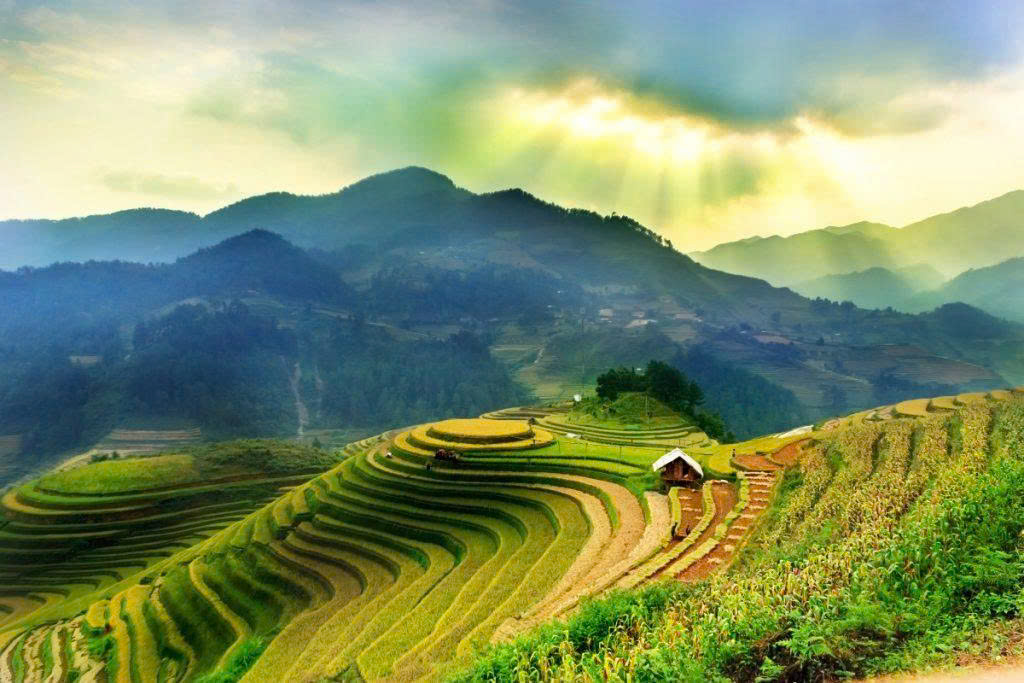
A bit further and more challenging to reach than Mù Cang Chải, Hoàng Su Phì is well worth the effort. Its terraces have been recognized by UNESCO as a National Heritage Site, valued not just for their beauty but also for their cultural significance to the local ethnic minority groups, particularly the Dao and H’Mông people.
Must-See:
- Bản Phùng: Offers arguably the highest and most sweeping views of the terraced fields, which rise steeply into the clouds.
- Thông Nguyên and Bản Luốc: These communes provide stunning, complex patterns interwoven with local villages, showcasing a beautiful blend of nature and human effort.
- Tip: The local people here maintain the land primarily through traditional methods, offering a genuine glimpse into mountain life.
3. Y Tý: Cloud Hunting Meets Golden Fields
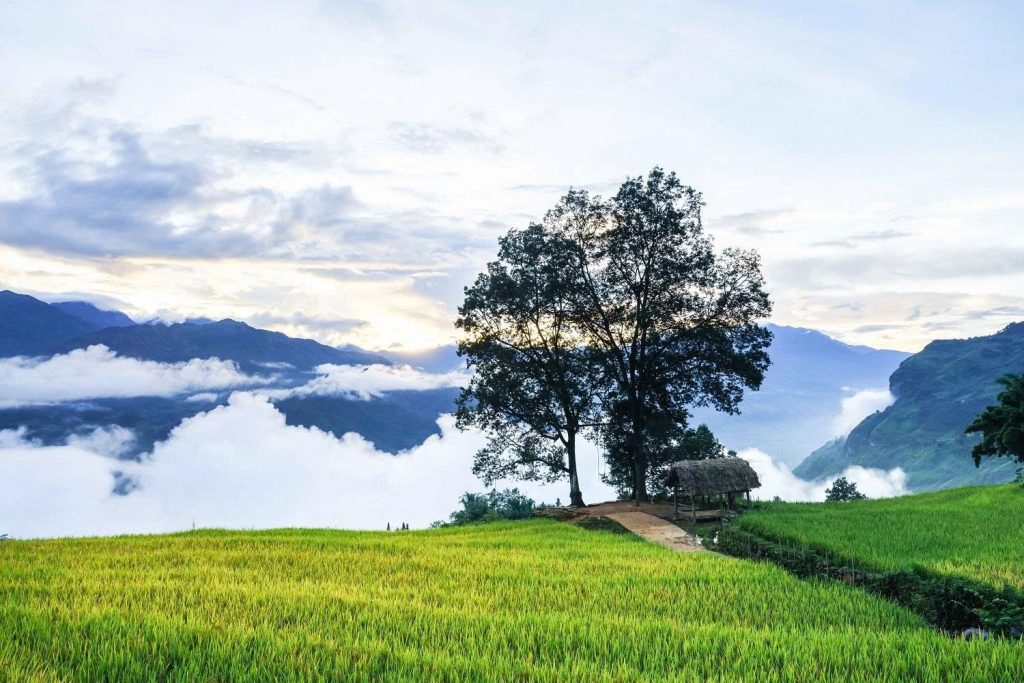
Located near the Chinese border, Y Tý is a high-altitude commune known for its remoteness and year-round mist. When the rice turns gold, the terraces often peek out from under a sea of white clouds, creating a truly ethereal effect.
Must- See:
- Dền Sáng & A Lù: These villages are prime spots for “cloud hunting” in the early morning, where the mist hangs low, highlighting the golden fields below.
- Lảo Thẩn Peak: For experienced trekkers, climbing Lảo Thẩn (the “roof of Y Tý”) offers a magnificent panoramic view of the golden valley and surrounding mountains.
4. Sa Pa: The Accessible Golden Valley (Lào Cai Province)
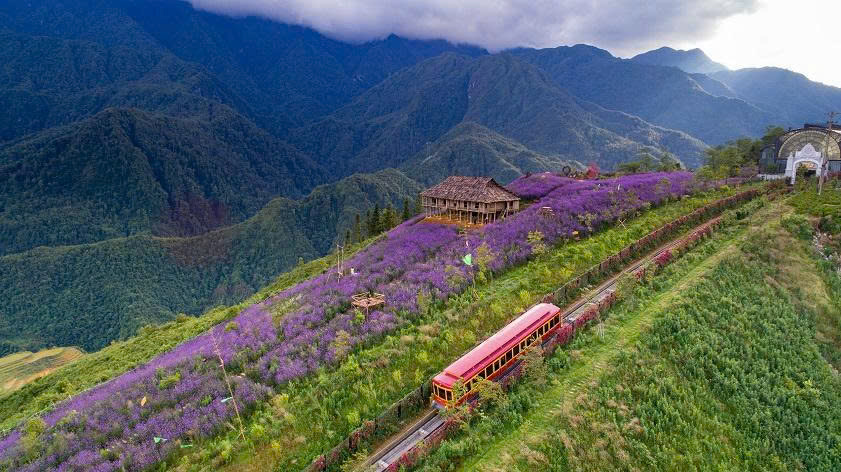
While the town of Sa Pa itself has become highly developed, the surrounding valleys still hold breathtaking golden scenery, easily accessible for most travelers.
Must- See:
- Mường Hoa Valley: The most popular location. Hiking or driving along the road connecting Tả Van and Lao Chải villages offers continuous views of the wide, sloping terraces.
- Tả Phìn: A quieter village known for its distinctive architecture and Red Dao culture, with beautifully framed patches of golden rice.
5. Tú Lệ: The Gateway to Yên Bái’s Gold (Yên Bái Province)
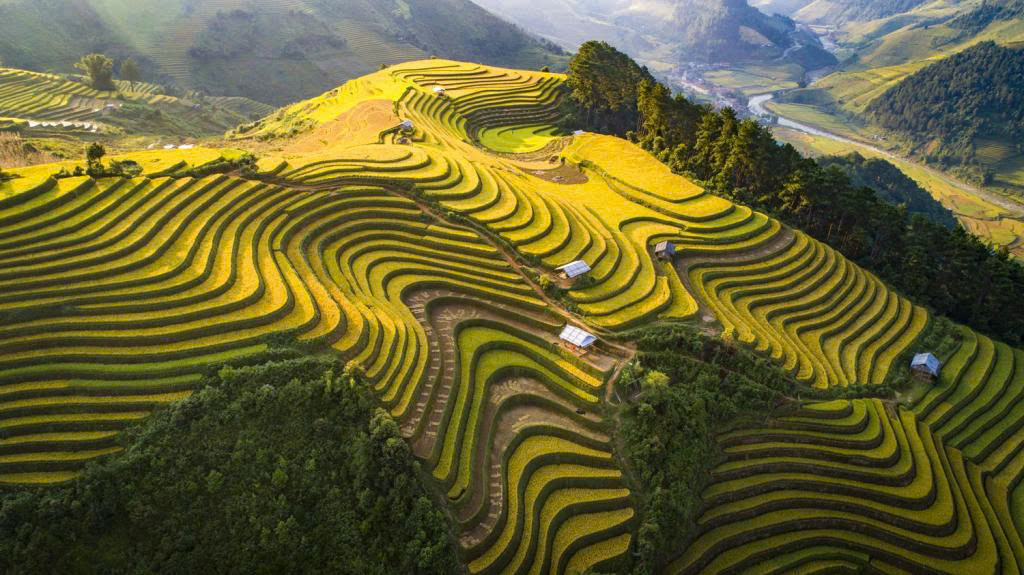
Situated just before the daunting Khau Phạ Pass on the route to Mù Cang Chải, the Tú Lệ valley is often considered the opening act of the Yên Bái Golden Season, but is a beautiful destination in its own right.
Must- See:
- The Valley Floor: The valley is wider and flatter than Mù Cang Chải, creating broad, sweeping golden expanses perfect for wide-angle photography.
- Tú Lệ Sticky Rice (Xôi Nếp Tú Lệ): The area is famous for growing the finest, stickiest rice in Vietnam. Make sure to try this local entity—a testament to the land’s bounty.
Practical Travel Itineraries & Accommodation (Search Intent Fulfillment)
Successfully navigating the Golden Season requires careful planning. Here are expert logistical tips:
Suggested Itineraries
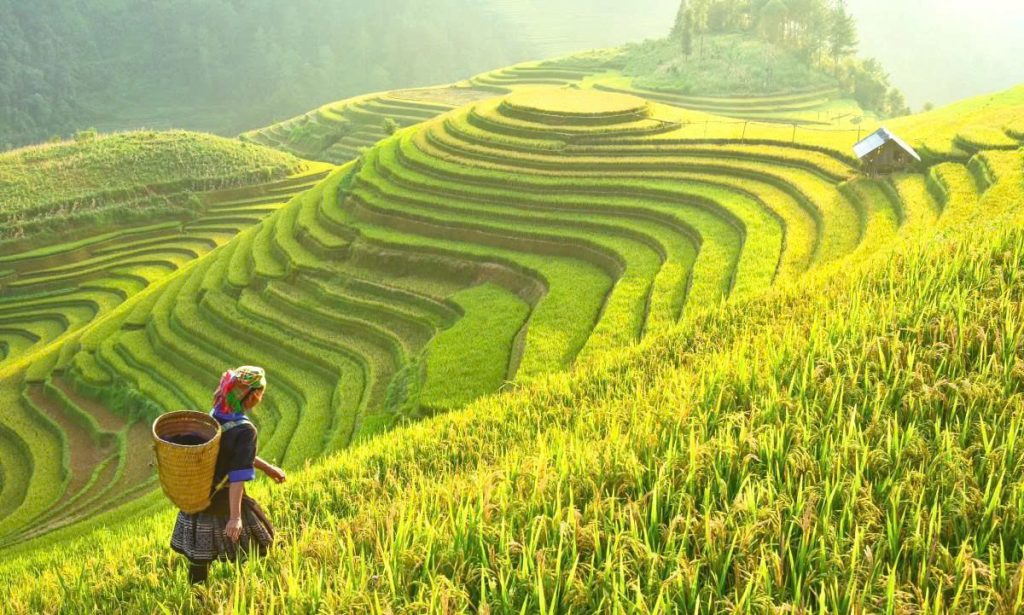
- 3-Day Mù Cang Chải Express: Hanoi → Nghĩa Lộ (Tú Lệ) → Mù Cang Chải → Hanoi. (Ideal for travelers short on time, maximizing the Yên Bái experience).
- 5-Day Northwest Explorer: Hanoi → Sa Pa → Y Tý → Hoàng Su Phì → Hanoi. (A demanding trip best suited for experienced riders/drivers focused on varied scenery).
Accommodation and Booking Strategy
The Golden Season is peak tourist time. Tip:
- Book Early: Secure your accommodation at least two months in advance. Rooms, particularly in Mù Cang Chải and Hoàng Su Phì, sell out quickly.
- Embrace the Homestay: Choose local Homestays over traditional hotels. Many offer stunning terrace views and provide an invaluable Experience with the local Tày or H’Mông communities.
Safety and Cultural
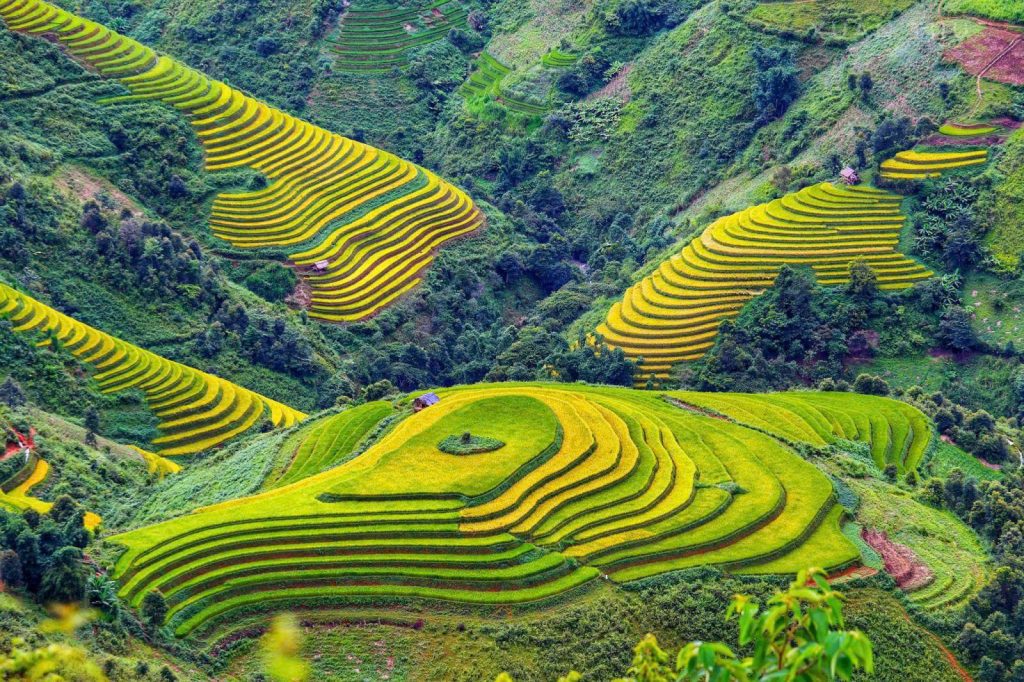
Traveling the Northwest is an adventure, but it requires respect for the rugged terrain and the local people.
Safety First
- Road Conditions: Mountain roads are steep, winding, and often unlit. If driving a motor-bike, ensure you are an experienced rider. Hiring a local driver for car travel is often the safest and most stress-free option.
- Altitude: Be mindful of changing temperatures, especially early mornings and late evenings.
Respecting the Local Culture
- The People: The terraced fields are the lifelines of the local H’Mông, Dao, and Tày people. Always ask for permission before entering a private field or taking photos of individuals, especially children or the elderly.
- The Land: These are active farmlands. Do not step on the rice paddies, leave trash, or disturb the local harvest work. Your money supports their economy; your respect preserves their culture.
RELATED: Things to do in Sapa Vietnam: All You need to know
The Golden Season in Northwest Vietnam is more than just a beautiful vista; it is a profound testament to the harmonious relationship between man and nature. By following this guide, you ensure not only a successful “golden hunt” but also a meaningful cultural experience that honors the land and its people.
- The Sky Pool London: Swimming Between Skyscrapers 115ft Above the City
- Discover Vietnamese Culture: Unveiling the Soul of a Nation
- Ultimate 14-Day Japan Itinerary for First-Time Visitors
- Top Beaches in Phu Quoc for Snorkeling: Your Ultimate Guide
- Discovering New York City’s Hidden Gems: Beyond Times Square

